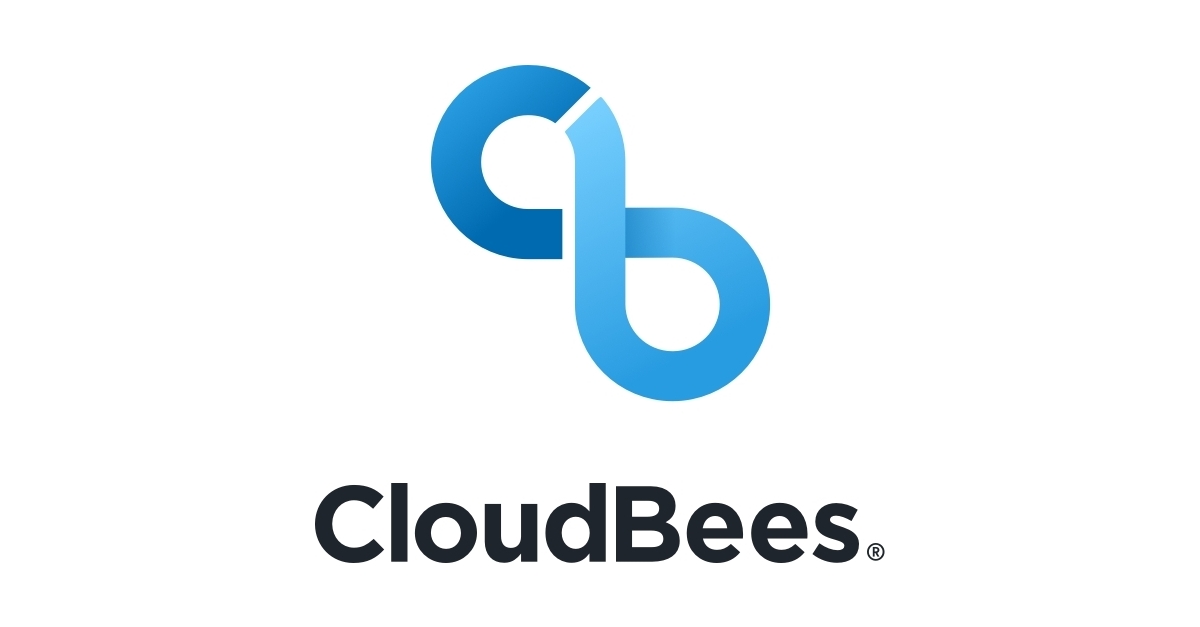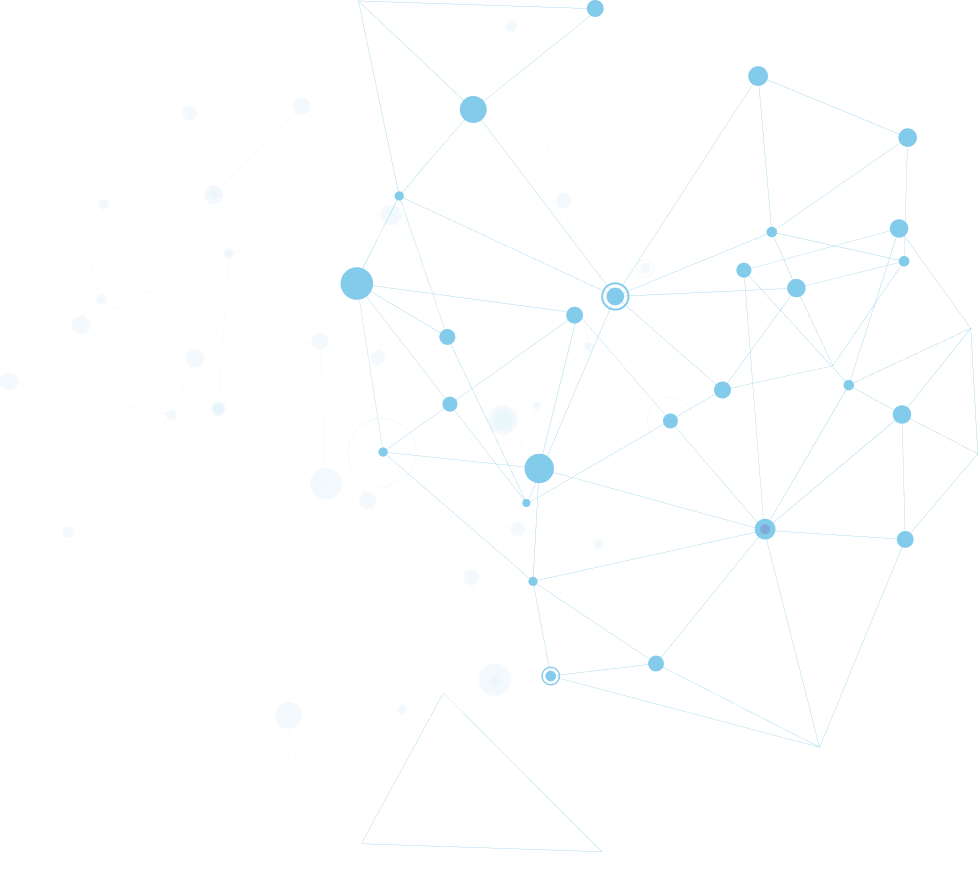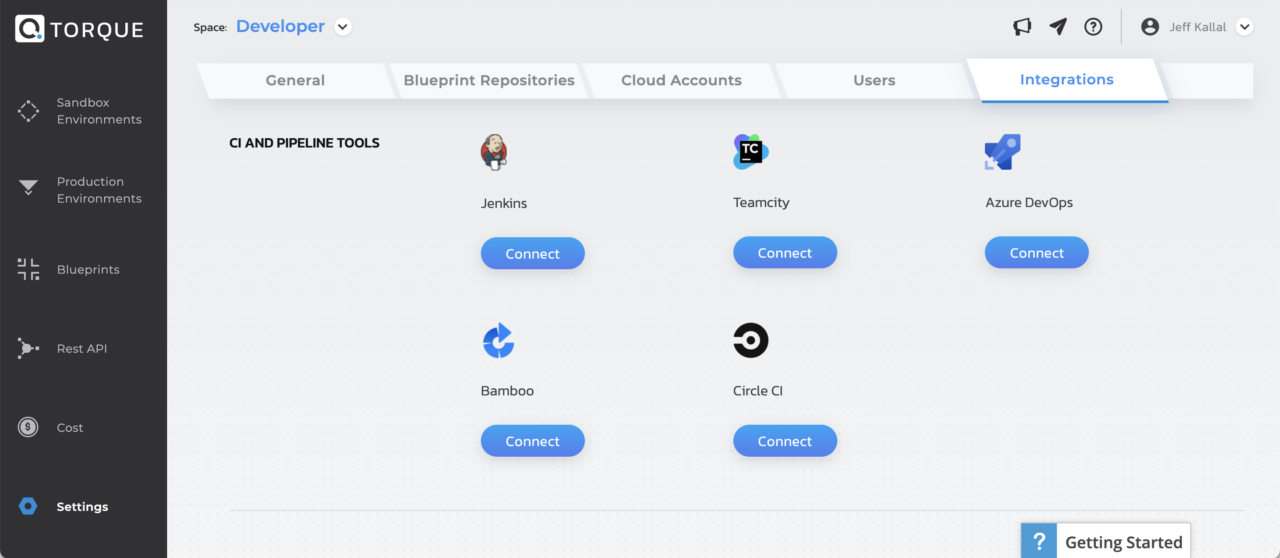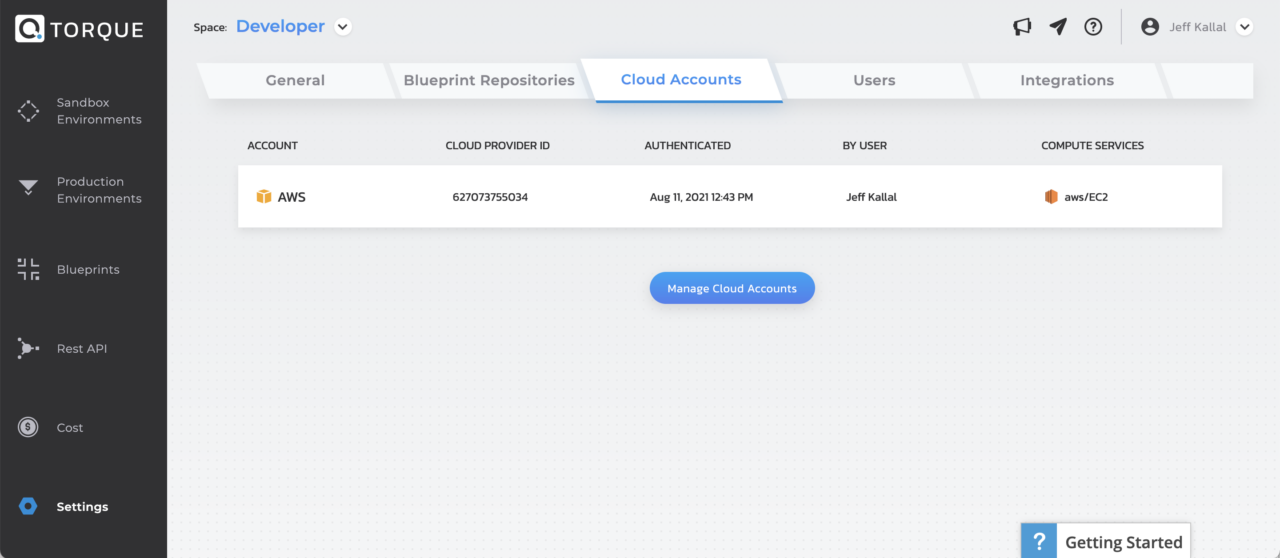

CloudBees
Combining the CloudBees platform with Quali’s Torque and CloudShell creates a connected and continuous experience for developers by way of self-service focusing on business outcomes and removing bottlenecks.
Release software faster by bringing the power of sandboxes to Jenkins Pipeline.
- Speed application release times by up to 10x
- Shift quality left
- Reduce Dev/Test infrastructure costs
- Provide self-service, full-stack Dev/Test environments
The CloudBees CI/CD platform functions and features include:
- Create and curate a self-service library of immutable components
- Declarative Pipelines for repeatable, durable pipelines as code
- Secure, event-driven pipelines and simplify cross-team communication
- Build audit-ready release workflows and generate on-demand audit reports
- Manage release workflows with anything as code: pipelines, configurations, feature flags, dashboards, etc.
- Agent-based, cloud native, clustering architecture for hardened security
- Feature flags for experimental freedom, progressive delivery, and common governance
Torque-Jenkins Integration Table of Content:
- Why do Quali Torque and CloudShell plug into CI/CD tools like the CloudBees Platform?
- Let’s review how IT engineers attempt to implement the DevOps processes today.
- What is Jenkins?
- What are Cloud Sandboxes?
- What does it take to create a Sandbox?
- Map a different blueprint as you move through the various stages using Quali’s API catalog.
- What does Quali and CloudBees Architecture look like?
- How does the Quali Jenkins plugin work?
By integrating your CloudBees Platforms like Jenkins with Torque and CloudShell, teams can consume dev, pre-production, or QA environments directly from the CloudBees pipeline before committing changes to production.
Together with the CloudBees Jenkins plugin, developers can spin up sandbox environments as needed with built in guardrails and policy delivered by Quali CloudShell and Torque to help organizations reduce and manage cloud resource costs.
Why do Quali Torque and CloudShell plug into CI/CD tools like the CloudBees Platform?
Putting together an infrastructure environment for CI/CD is time consuming. Representing and deploying complex application infrastructure can be error prone and difficult to troubleshoot.
As a result, DevOps/QA teams often will take short cuts to solve the problem, which can lead to the risk of unidentified issues in production, expose private data in tested applications, and enable developers to skip test scenarios resulting in poor test coverage.
Let’s review how IT engineers attempt to implement the DevOps processes today.
During the DevOps workflow, application teams generally use a pipeline mechanism like CloudBees Jenkins to trigger the deployment and test of the application at different stages from performance and load testing to security and integration.
During the pipeline delivery, many tools may be invoked at lower levels of the automation process. For example, configuration management and automation frameworks such as Chef, Ansible and Puppet, Cloud Infrastructure templates such as AWS CloudFormation and OpenStack Heat, or container orchestration technologies such as Docker Swarm Mesos or Kubernetes must seamlessly talk with each other.
If they don’t, it can lead to time consuming debugging and troubleshooting steps within the IaC layer. With Quali’s Torque and CloudShell, these triggers begin and end with a click of a button.
Combining forces with CloudBees Enterprise grade Jenkins and Quali’s Torque and CloudShell helps organizations create a standardized value stream and single DevOps point of view across all development siloes.
As organizations implement their DevOps process, a lack of standardization can lead to fragmentation of solutions and greater complexity, especially for large portfolio of applications.
For organizations large or small, it is difficult and time consuming to set up complex environments, resulting in delays directly impacting the agility of an end-to-end pipeline deployment.
What is Jenkins?
The Cloudbees Jenkins platform is a popular build management tool. The Jenkins pipeline plugin lets the test engineer define multiple gated stages that are mapped to different phases of the application release.
What are Cloud Sandboxes?
A Cloud Sandbox defines the environment in which an application tester will validate a specific use case. It includes the physical and virtual infrastructure, application workload, data, test tools, and services.

What does it take to create a Sandbox?
An application engineer or architect will model a blueprint via YAML files and store them in their source control system (GitHub or BitBucket) attaching automation and orchestration resources.
Torque includes out of the box REST APIs. Once a blueprint has been created, the blueprint can be published to a catalog and deployed to the cloud of your choice (Azure, Kubernetes, and AWS are all supported out of the box).
Another important aspect is the added governance and control from the creation of blueprints to their activation into sandboxes. As mentioned above – developers, engineers and architects can activate ecosystem inputs and outputs from the blueprints through a RESTful API.

A common use case for the CloudBees Jenkins Platform and Quali’s Torque or CloudShell focuses on the deployment and teardown of a development sandbox during each stage of Jenkins’ continuous integration process. Quali uses the Jenkins pipeline to manage the phases and gating definitions of the continuous integration process.
Map a different blueprint as you move through the various stages using Quali’s API catalog.
From development to production, users can realize the value of our Jenkins plugin as it takes just minutes to define an environment. Our blueprint approach solves the problem of fragmentation by offering a layer on top.
The value of Quali’s blueprints lead to standardization and repeatability, helping application and development teams drastically speed up their blue/green release cycles because each Jenkins job running on the CloudBees platform will also run a suite of tests based on the phase definition.
After the test is complete, the blueprint triggers the teardown of a sandbox at each stage. We remove the guesswork and manual backend steps required from the development environment.
This leads to efficiency gains and immediate ROI across each silo in an organization’s DevOps lifecycle.
It’s important to note that Quali’s Torque and CloudShell blueprints do not replace the orchestration tools mentioned above. We provide tight integration with them to bring them into the continuous deployment lifecycle of an application development project.
Quali’s sandboxes may be deployed on the cloud of your choice.

Each iteration of the developer’s application build is retrieved from the organization’s artifact repository pool then is automatically deployed using any orchestration tool.
What does Quali and CloudBees Architecture look like?
The Jenkins tools are typically deployed centrally in a distributed Master/Agent configuration where the agent executes the job tied to the pipeline.
In specific phases where developers need to stand up or tear down infrastructure, the Jenkins job calls on the CloudShell or Torque REST API to create the Sandbox.
The Quali Application server then calls the CloudShell/Torque execution server to deploy the virtual machine and application. This execution call retrieves the build from the artifact repository using web services. In Torque, developers can spin up instances/K8S PODs and deploy the artifacts, if necessary.
How does the Quali Jenkins plugin work?
A developer makes a code change in their source code repository thus triggering a build in Jenkins. Jenkins pipeline build will run the step that will call the job to start the sandbox.
Once the build is done, the Test phase of the pipeline will run.
The Jenkins job will run the test on that sandbox and upon successful completion, will delete the Sandbox moving on to the next phase in the continuous integration flow.
In the performance testing phase, the plugin will trigger the deployment of the Performance Sandbox in Torque or CloudShell and run performance testing against the target infrastructure.
It will then terminate that Sandbox once the test reaches a pass status. If the test fails, Quali’s UI allows for users to debug the environment to identify any errors.
Now that we’ve reached the deployment of the application, we will take a closer look at what the sandbox will do in this phase.
As a first step, CloudShell will deploy the host virtual machine or K8S PODs on any Cloud Infrastructure.
Quali’s CloudShell or Torque retrieve the build package from your artifact repository and copy the artifacts over to the target virtual machine (Apache Web server package, for example).
The rich integration between Quali’s CloudShell and Torque with organization’s artifact repository, CloudBees Jenkins platform, and orchestration tools provides teams with an extensible end-to-end automation solution to deploy and test complex applications as part of the continuous integration / continuous deployment DevOps workflow. Quali’s unique combination adds real self-service to any DevOps initiative at scale providing key governance guardrails to control cost and code drift while allowing for developer autonomy.
Quali removes the complexity of managing cloud infrastructure resources with agile in mind. Quail’s word class solutions help enterprises reach their business objectives by speeding up their application deployments starting with CI/CD. Learn more about our integrations on our website.
Sign up for a free trial of Torque and try out our workshop for hands-on examples.
Find how-to and documentation on our Jenkins plugin here.
Learn more about Cloudshell and Jenkins on our community site here.
Check out our Github repositories here: Torque-Jenkins and Torque-jenkins-dockerized
